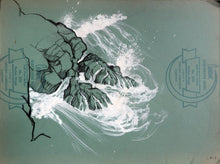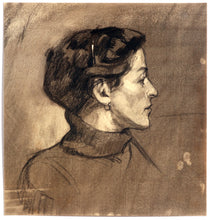The Artist's Guide to Sketching
- Regular price
- $29.99
- Sale price
- $29.99
- Regular price
-
- Unit price
- /per
Adding product to your cart

The Artist's Guide to Sketching: The Classic Book about Making Art on Location
Since its release in 1982, The Artist’s Guide to Sketching has become a classic art guide for students and laypeople around the world. The book includes instruction and artwork by James Gurney and Thomas Kinkade—two students who would go on to fame with Dinotopia (Gurney) and as the “Painter of Light” (Kinkade).

Chapters and topics include:
- Chapter 1: THE EXPERIENCE OF SKETCHING (Coping with the Weather, Sketching at Night, Sitting or Standing?, Dealing with Curious Spectators, Being Inconspicuous, At Home Amid the Elements
- Chapter 2: MATERIALS (Sketchbooks, Pencils, Pens, Markers, Wash and Drybrush, Sketchboxes and Carrying Cases, Experiencing Your Materials)

- Chapter 3: ACHIEVING ACCURACY: (When to Use an Underdrawing, How Much Underdrawing is Necessary, Establishing the Large Shapes, Measuring Lengths, Measuring Slopes, Using Perspective Guidelines, Constructing with Geometric Forms, Completed Underdrawing, The Final Execution)
- Chapter 4: CAPTURING MOTION (Freezing Motion: A New Way of Drawing, Learning to Observe Motion, Training Your Memory, Getting It Down Fast, The Scribble Approach, The Gestural Approach, The Mannikin Approach, The Tonal Mass Approach, When Your Subject Moves Unexpectedly, Places to Go for Motion Sketching)
- Chapter 5: CREATING MOOD (Choosing a Subject, Noting Impressions, Composing with Thumbnails, Selectivity, Center of Interest, Dramatic Opposition, Delicacy, Mystery, Structure and Expression)
- Chapter 6: USING IMAGINATION (Dare to be Creative, Being Imaginative On-the-Spot, Exaggeration, Changing Context and Scale, Using Anthropomorphism, Additions and Combinations, Feeding the Imagination, Becoming More Imaginative)
- Chapter 7: STUDYING NATURE (Nature: Your Personal Drawing Workshop, The Experience of Nature Sketching, Plants, Animals, Sketching at the Zoo, Natural History Museum, Clouds, Rocks and Landforms, The Benefits of Studying Nature)
- Chapter 8: SKETCHING PEOPLE (Finding Raw Material, Exaggerating Character Traits, The Cartoon Approach, Portraying People in Their Environment, Two Characters, Group Composition, The On-The-Spot Portrait, Making People Sketches Come Alive, Family and Friends: Your Free Models)
- Chapter 9: EXPLORING THE MAN-MADE WORLD (Begin with the Commonplace, Sketching the Home, Indicating Building Exteriors, Signs and Letterforms, A New Look at Machines, Using Clutter, On-The-Spot Spot Research, Using Written Notes, Thinking As a Documentary Artist, The Joy of Exploration)
- Chapter 10: SKETCHING IN YOUR LIFE (Keeping Specialized Sketchbooks, Developing Sketches into Paintings, Sharing Sketches With Others, Sketching Alone or With Others)

Responses to the 2025 edition:
"This book is a treasure. It's a practical guide to drawing in uncontrolled situations, but also an inspiration to creativity. Its true value lies in the way it clearly demonstrates how the act of sketching brings the artist to a closer understanding of the richness of the world. I knew this book when I was younger, and what I remember was how Gurney and Kinkade edited what they were seeing, rather than trying to robotically describe everything in a scene. What I see now is how they used sketching to practice their artistic judgment, rather than just their rendering skills. In that way, the experience of sketching can serve as a launch pad for exercising those same choices in the studio. Comparing this new edition to the original book, I can see how the printing quality of the first edition compressed the values and flattened the darks. The original book was like looking at the originals through dark glasses, but now it feels like finally getting a good pair of reading glasses instead."
—Nick Jainschigg, Associate Professor of Illustration at Rhode Island School of Design and coauthor of The History of Illustration
"This new and remastered Artist’s Guide is tighter, cleaner, updated, in glorious color, and comes with the hindsight of two lifetimes of spectacular artistic success. Jim and Tom bring one of the great drawing books of the twentieth century into the twenty-first, newly relevant for a new generation of artists, who can again learn the transgressive joy of sketching from life, on the spot and in the wild."
—Bryn Barnard, author of Outbreak: Plagues That Changed History
“Little did I suspect that these two Art Center students who used to frequently visit my legendary La Brea art studio would both quickly become world renowned artists in their own right. This book, the result of a grand artistic travel adventure, clearly displays their abundant early talents. It is a highly sought-after volume, packed to the brim with rock solid information and highly inspirational advice for artists young and old. Even if you are one of the lucky art collectors who owns a copy of the first edition of this book, you’ll want to pick this version up as well, as it has been expanded with new pages, thoughts and illustrations.”
—William Stout, Pasadena, California
“This is not only a wonderfully practical guide to the materials and practices of sketching but also considers the deeper benefit of feeding our soul through a deeper connection to our subjects. Chiefly however it is an excellent reminder for us all to foster curiosity and joy through the practice of drawing.”
—Joe Paquet
"More than a time-tested manual of drawing skills, this book is a grand adventure. Two young friends hit the road on a journey of self-discovery. Follow the footsteps of Gurney and Kinkade as they sketch their own ticket across America."
—Marc Holmes, Urban Sketchers
“Every urban sketcher should own a copy of The Artist’s Guide to Sketching. In fact, if I could only have one drawing book on my shelf, it would be this one. It’s packed with that many insights about drawing on location, about everything from perspective to people sketching to nature and animals. But for me, the most brilliant section is about learning to capture motion by training your eye to freeze a gesture so you can record it in your sketchbook. I find myself returning to insights like these again and again. James and Thomas are penetrating, generous and thoughtful on every page, and it’s impossible to not be inspired by their love of drawing."
—Shari Blaukopf, co-founder of Urban Sketchers Montreal and author of The Urban Sketching Handbook: Working with Color
"The Artist’s Guide to Sketching is at once a compelling memoir and an inspirational call to artists to break free from generic images and clichéd concepts by getting out and recording the real world in all its wonder and complexity.”
—Alice A. Carter, Author and Professor Emeritus Animation/Illustration, San Jose State University
“This is a marvelous book, filled with the kind of wisdom you'll never find in a classroom or library. Two artists paid their dues and learned valuable lessons on their cross-country sketching safari . They've passed those lessons on to us in a classic book, now expanded and remastered. Their practical pointers about drawing materials and techniques are important, but equally important is the inspiration we get from the story of the two travelers hopping freight trains and sleeping on rooftops, earning their way by the sheer love of drawing. Profusely illustrated, beautifully written.”
—David Apatoff, Art Critic, The Saturday Evening Post
"James Gurney reminds us of the simple pleasures and importance of sketching in this rerelease of The Artist's Guide to Sketching. Whether you're an experienced artist or just getting started, this book provides everything from materials to what to look for when creating sketches. It also inspires and encourages you to get out there and document the world as you see it."
—Angela Sung: Concept Artist, Art Director, and Founder of Warrior Painters
“Any time James Gurney releases a book, it’s an instant must have for artists everywhere. The Artist's Guide to Sketching, created with Thomas Kinkade, is no exception. Thoughtfully crafted, endlessly inspiring, and a testament to why James is a true artistic hero to so many of us.”
—Bobby Chiu, Producer, Concept Artist, and Co-Founder of An Infinite Story, LightBox Expo, Schoolism, and Imaginism Studios.
“James Gurney creates impressive images, but he is also one of the most generous teachers in the world. In this book, his buddy road-trip with Thomas Kinkade not only showcases their history and skill, but also their spirit of helping other artists get better at drawing.”
—Marshall Vandruff, Associate Art Professor at Laguna College of Art and Design
"Sketching is extremely useful to master drawing. Many of the best artists I know have a habit of daily sketching. Whether you're a digital or traditional artist, chances are you're usually stuck in your studio. This practical guide will inspire a new generation of artists to pick up their sketchbooks."
—Stan Prokopenko, founder of Proko.com
"James Gurney and Thomas Kinkade's The Artist's Guide to Sketching is a rare and marvelous thing. On the one hand, it is the record of two fledgling artists setting out on a Grand Adventure, returning with their knapsacks and sketchbooks full of memories and visual mementos. On the other, it is a wellspring of wisdom and empathy, sharing not just tools and techniques, but the trick of seeing beyond the surface, and capturing in a sketch that magical essence. It's a love letter to everyone's first language—picture-making. The Artist's Guide to Sketching is both a guide and a celebration of the adventures that await."
—Iain McCaig, Artist, Writer, Filmmaker
“These two kids, Gurney & Kinkade, were painting Fire & Ice backgrounds for me. So they asked for an extra day off, every week, to do a book. I don’t know why I said yes but I'm glad I did. See for yourself.”
—Ralph Bakshi, Director and Producer, Fire and Ice
Would you like a deep dive into additional blurbs and behind-the-scenes content? Check out this Google Drive folder.






















